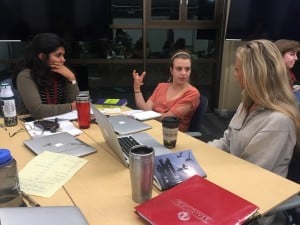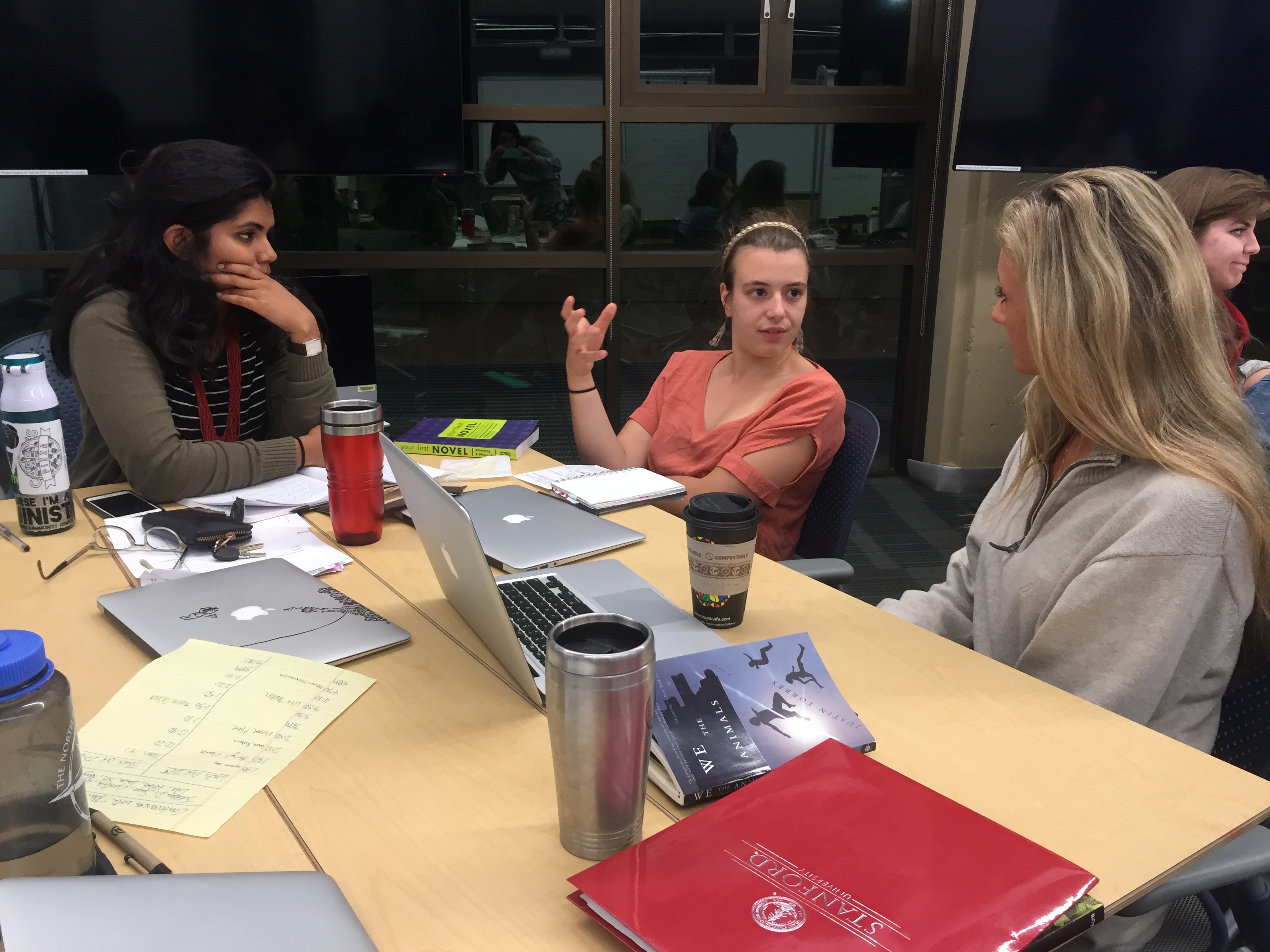
After five weeks of preparatory work, students in ENGLISH 190T.2: “Novel Writing Intensive” are poised to start and finish writing a novel in a single month — a daunting goal that will require students to write around 1,700 words a day.
Members of this five-unit class spent the first half of the quarter reading short novels, discussing novel structure and planning out plots and characters. On Nov. 1, students will join the annual literary phenomenon “Nanowrimo,” short for “National Novel Writing Month.” Nanowrimo participants commit to writing 50,000 words of a new story during November.
ENGLISH 190T.2 guides students through this whirlwind process, turning what might seem like a gargantuan, solitary task into a collaborative endeavor. Support from peers and teachers during the month of writing is a key element of the class, according to English Lecturer Tom Kealey, who co-teaches the course with fellow English Lecturer Scott Hutchins.
“I think we have this myth of writers as a lone genius, where Hemingway or Faulkner sit up in the attic or down in their basement and clack away at the keyboard until they create this classic,” said Kealey. “In fact, that’s not the way most other artists work.”
“A lot of it is just pacing,” Kealey continued. “It’s almost like having a running group as you’re running a marathon… Hopefully it’s a positive peer pressure that will help people keep going in November.”
Throughout the pre-writing process, students acted as each other’s sounding boards. During class last Tuesday evening, students broke into groups of three of four to help each other develop characters or important scenes. Class members also shared their writing strategies, which ranged from storyboarding on Pinterest to writing longhand when stuck to spending Thanksgiving at grandma’s house without Internet.
Starting at the beginning of November, students will host daily “write-ins” in which as many members of the class able to attend gather in a café or other common area to work toward their daily word count together.
“It makes me less nervous to start than I have been in other years… because I feel like I have a backup system for if I get stuck or feel discouraged,” said Kendall Hoffman ’18, who has participated in Nanowrimo five times previously.
“We’ve all heard about each other’s stories now,” Hoffman added. “So we can be writing a scene and say, ‘Oh my gosh, this character is giving me so many troubles,’ and everyone else will know who you’re talking about.”
Kealey and Hutchins, who have taught the course every other year for five years now, said that the hectic pace of novel-writing shifts the class focus toward immersing oneself in the writing process, rather than perfecting the craft. Revision, typically a pillar of creative writing courses, becomes an impediment to the first-draft mindset that keeps words flowing.
“At the end of the day it’s their commitment to writing 50,000 words rather than what we think of as quality… that’s the most important thing,” Kealey said. “Endurance and commitment and having a positive attitude during the month of November is really the key to having success in the class.”
Accordingly, course grades are largely based on participation and on how close students’ final word count comes to their goal. Kealey and Hutchins select students for the class based mostly on seniority rather than evaluating a writing sample; the main qualification for admittance is interest in such an intensive experience.
However, successful writing goes beyond quantity, and students are expected to write a complete story with narrative arc, Hutchins said. The pre-November work aims to prepare students for working toward their 50,000 words in a thoughtful manner.
Echoing this goal, class member Hoffman said that her previous Nanowrimo experiences have not resulted in novels that she is proud of and wants to pursue.
“I really wanted to take a class where I could learn how to do [Nanowrimo] in a productive way,” she said.
Hutchins emphasized that, despite all their preparatory exercises, once November arrives students will need to think nimbly.
“You get into the actual writing, and everything changes,” he said. “That can feel very stressful, because you’re like, ‘my plan didn’t work.’”
Thus, he urges students to be “awake and alive to the material as it’s presenting itself to you.”
With Nov. 1 rapidly approaching, students expressed some trepidation over the change in pace that will come with a 1,700-words-per-day target.
“I’ve gotten into a routine,” said Sri Muppidi ’17. “Now that November’s coming I know that everything’s going to be shattered and I have to really adjust.”
But mostly, Muppidi and her classmates are excited to officially begin writing. While five members of the class are Nanowrimo veterans, others will finally be tackling a long-held ambition.
“It’s what I’ve said I’ve wanted to do for so long, and now I’m actually doing it,” said Alex Dunne ’16.
Kealey estimated that a third of the class usually decides to work on their drafts further after the course ends — for example, one student from the first novel-writing class four years ago developed his draft into an honors thesis.
Regardless of what students do with their drafts, Kealey hopes they feel a great sense of accomplishment.
“Everyone says, I could write a novel, or I have an idea for a novel,” he said. “It’s another thing to actually do it.”
Contact Hannah Knowles at hknowles ‘at’ stanford.edu.
